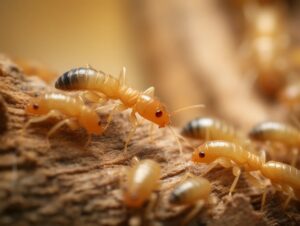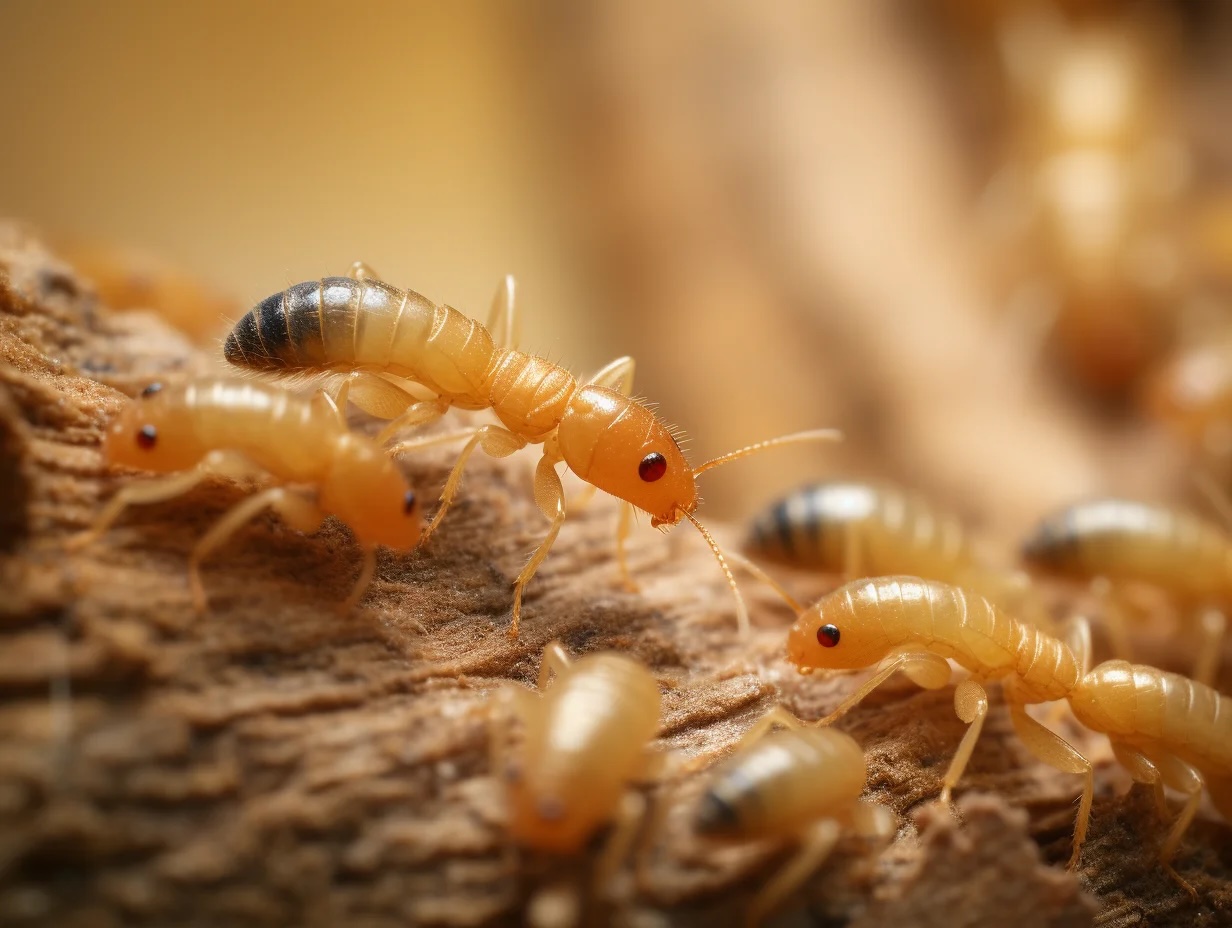
Despite their tremendous abundance in the natural environment, termites are cryptic pests that are very rarely seen by humans. Since termite colonies are well hidden beneath the ground surface or within infested wood, the only termites humans are ever likely to see are reproductive termites (alates) during their annual mating swarms. As their name suggests, subterranean termites dwell below the ground where workers tunnel through soil in search of food sources. Workers transport food sources back to the nest where they physically feed soldiers, offspring, and the queen. The western and desert subterranean termite species are the two most economically damaging subterranean termite species that can be found in Ventura County. One mature western subterranean termite colony contains more than 200,000 individual termites, and it is not uncommon for several colonies to become established on one single property. When this occurs, workers from multiple colonies usually establish infestations in different areas of a home’s timber frame.
In southern California, alates from western subterranean termite colonies indulge in their annual mating swarms during the rainy season, which occurs during late fall, winter and early spring in the state. Western subterranean termite swarms emerge on sunny days during the late morning and afternoon hours following bouts of rainfall. Heavy lawn irrigation can also trigger western subterranean termite alates to emerge from nests that are located on residential properties. The emergence of subterranean termite swarms within homes indicates that the pests have established an infestation. Swarming western subterranean termite alates are often mistaken for ant swarms and alates belonging to western drywood termite colonies. Western subterranean termite alates are shiny, dark brown to black, and 8 mm in length, making them around 4 mm shorter than drywood termite alates. It is also worth noting that western subterranean termite damage often presents as clearly blistered or dark areas on flooring. These blistered areas easily cave in response to pressure.
Have you ever had a termite inspection carried out on your property?


